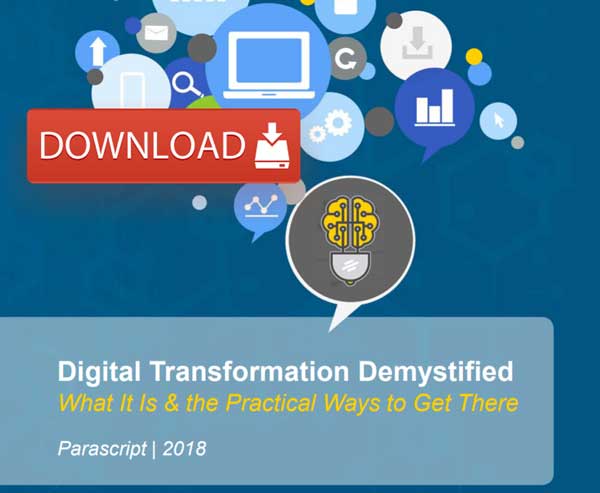
A joint investigation by Fortune Magazine and Kaiser Health News offers a very useful case study of sorts for the negative ramifications of digital transformation projects that are not well-defined or coordinated. The results of this investigation were published in a recent long-form article by Fortune called, “Death by a Thousand Clicks.”
You’ll want to read the article, but I will cut to the key takeaways regarding how the Health Information Technology for Economic and Clinical Health Act (HITECH Act), which included significant incentives for Electronic Health Records (EHR) can provide a good illustration on how not to take on a digital transformation project.
Emphasis on Deadlines Over Objectives
A significant reason for high adoption of EHR systems was due to incentives provided by the government, and there were deadlines for these systems to be certified and in-place. The article states that “…apart from all of the blame, a constant theme emerged that the rush to digitize over all else was a major root cause.” This resulted in a fixation on the wrong objective. In many respects, systems may have been certified to have the correct capabilities, but were completely lacking in usability. This usability is critical for any system intended to drive efficiencies and even more so for systems that support healthcare where a mistake can cost a life.
Digital transformation is a journey, not a project, and initiatives need to focus on getting it right over getting it done.
Not Starting with Quick Wins
Since the government was involved, committees were formed to establish guidelines and rules for reimbursement. A major problem was that rather than work on subsets of the overall objective, every stakeholder participated without an effort to prioritize one part over another. The article quotes one person who was part of the organization charged with coordinating the entire project, “We had all the right ideas that were discussed and hashed out by the committee, but they were all of the right ideas.”
Digital transformation cannot be implemented in one shot. There are processes that will be more important, but are too complex and risky to include in “phase 1.” Instead, successful projects implement change gradually. This allows for establishing “lighthouse projects” and gaining experience before taking on harder initiatives.
Not building-in Interoperability/Modularity
One major problem that has crippled EHR adoption was the lack of interoperability between different systems. A vision of EHR was the ability for health records to be “portable” and allow sharing of this information between systems and organizations. The article goes on to explain that differing agendas, which were expressed as “perverse business dynamics” served to undermine the goal of portability. This is because healthcare providers believed their data to be proprietary, and software vendors offered competing data exchanges that went against the needed openness of systems.
Digital transformation cannot be a monolithic, single-sourced project because organizations are made up of many processes orchestrated and managed by many different departments.
Digital transformation cannot be a monolithic, single-sourced project because organizations are made-up of many processes orchestrated and managed by many different departments. As a result, digital transformation involves selection of multiple technologies, each of which should be modular. This way, they can be upgraded or replaced without impact to other systems. In order to do this, they should support interoperability.
Focus on Features Over Efficiency and Effectiveness
The fixation on certifying solutions based upon feature sets got in the way of actually creating systems that could deliver upon their promise. This led to process relocation instead of process improvement. As the article states “EHRs didn’t take away paperwork; the systems just moved it online.” Overall work was not reduced, and the requirement to use a complex GUI made it more arduous, according to the Fortune article.
While digital transformation is not solely about creating efficiencies, the ability to reduce low-value manual tasks is a key foundational attribute. Systems may enable transition from paper to digital forms, but that does not necessarily mean that work is reduced. A failure to establish key performance-based criteria in addition to other key measures can result in complete project failure.
Disappointing data is out there on the lack of success for IT projects. The root causes always seem to be the same such as:
-
- Scope issues
- Unrealistic deadlines
- Selection of technology without defining the requirements
- Differing agendas
- Change management
Some level of these problems is present in any IT project. Given that digital transformation is much more broad in scope, impacting many (if not all) key processes, any of these core problems can derail an organization-wide initiative and result in more than just wasted time and money. Digital transformation is a journey, not an end, and that means plotting a practical course.
###
If you found this article interesting, you may want to watch this recent interview, “Digital Transformation: What We Need Now for the Future” and find this eBook useful, Digital Transformation Demystified, What It Is & Practical Ways to Get There.




